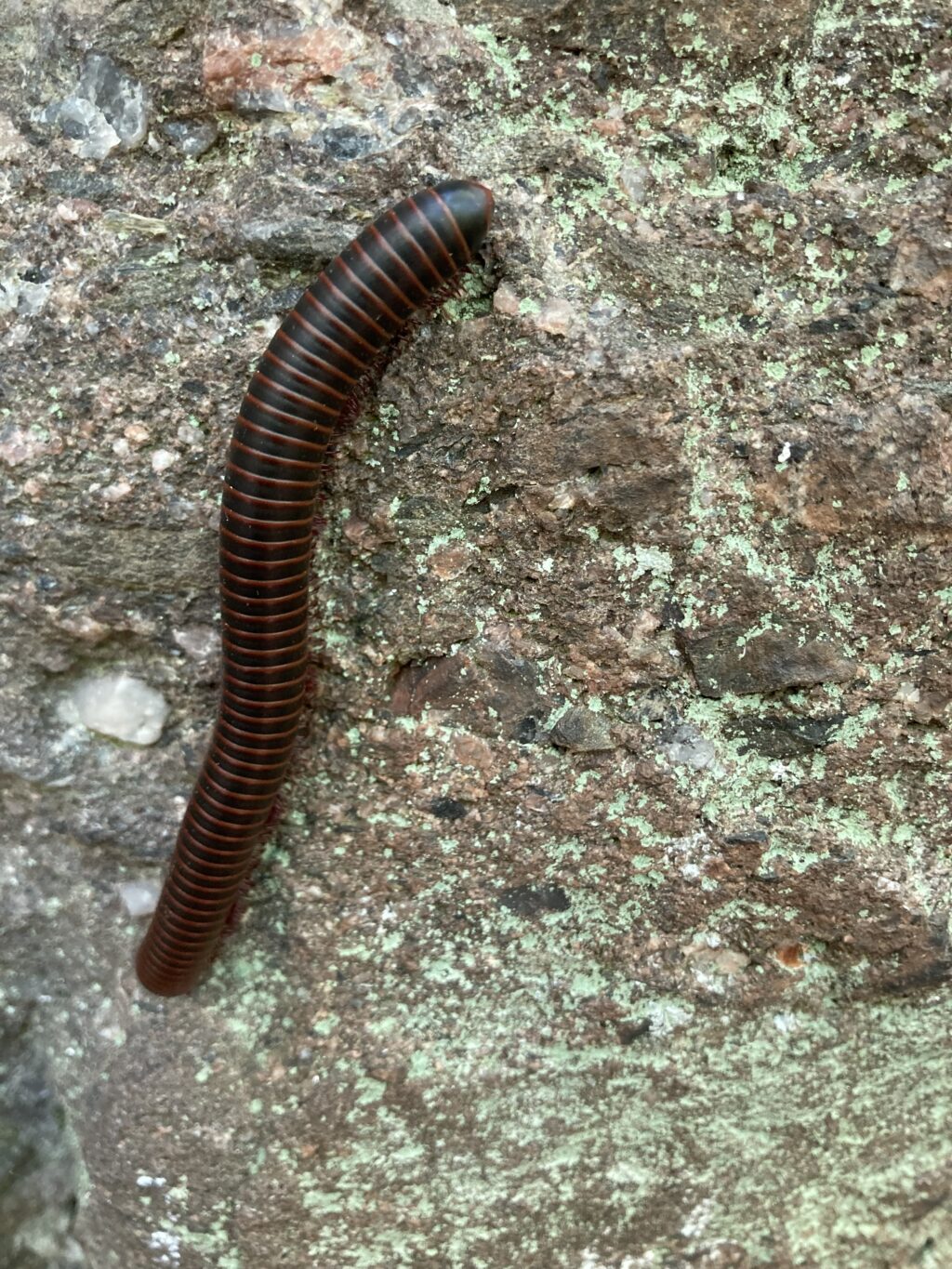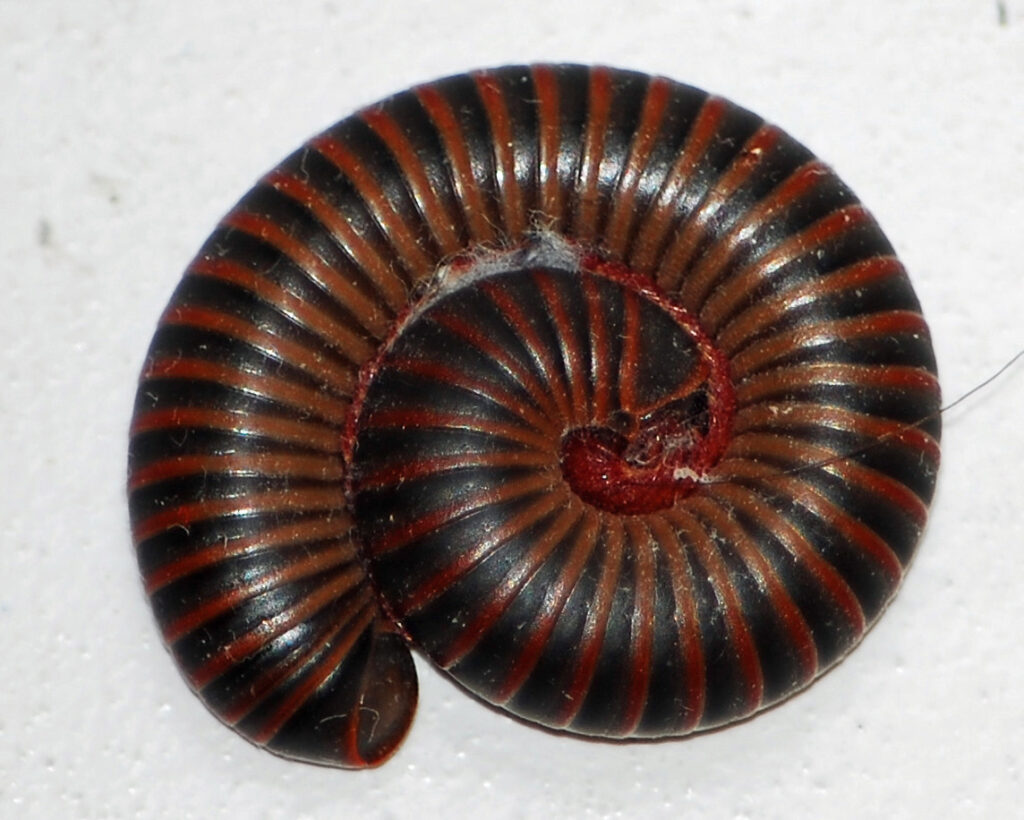Almanac: Gentle Giants

American giant millipede. Despite their name, these gentle creatures seldom grow longer than about 3-4 inches in our area. Photo: Stephen Braun
I was at the base of some cliffs on the western flank of Mt. Toby in Sunderland last week trying hard to focus on my friend who was climbing above me and whose safety depended on me keeping the belay line in the correct position near my waist. I’m happy to report that no injuries were sustained that day…to either of us. But some creatures crawling on the ground near the cliff base, as well as on nearby rocks, were not so lucky.
The conditions that morning—sunny and fair—were, for reasons unknown, appealing to a number of American giant millipedes, a couple of which either I or my friend accidentally stepped on as we scanned the rock face for routes. Once we realized these friendly little creatures were out and about, we were more careful and avoided any further casualties.
Millipedes, as the name implies, have a lot of legs…hardly a thousand, but typically, for an adult, between 80 and 100, which come in pairs attached to joints on the underside of their cylindrical bodies. The exquisite coordination required to move all these legs is impressive and beautiful to watch, the legs moving along, wave-like, to propel the millipede forward. Partly because so many legs are involved, and the fact that the legs themselves are so small, millipedes are not fast animals. You can easily catch them and, if you like this kind of thing, let them crawl around on your hand or forearm. It tickles a little. They don’t bite or sting and are really rather cute, for an arthropod.
Centipedes, on the other hand, have longer legs arranged singly on the body and move quite rapidly. As with millipedes, the name “centipede” exaggerates reality: they usually have far fewer than 100 legs…more like 17-20 in the species around here. Something about their darting habit and those longer legs is unappealing to me, so I’m happy to just look at centipedes when I come across them, rather than petting them, as I do with millipedes.
I have read that the American giant millipede, and other millipedes, can exude a foul-smelling, skin-irritating liquid if they are “aggressively disturbed,” but I’ve never experienced this. I have seen them curl up in a classic defensive posture when first picked up, but in my experience they quickly relax and start exploring whatever new surface they’re on, human or otherwise.

These local millipedes can live a surprisingly long time …up to 11 years in captivity. Unlike the females of other millipede species that lay 20-300 eggs at a time, female American giant millipedes lay only a single tiny egg at a time in a nest make of chewed leaf litter and excrement. Mom wraps herself around the egg for several weeks until it hatches. The baby has only 7 body segments and 6 pairs of legs, with segments and pairs of legs added successively in the coming months as it repeatedly molts until sexual maturity in about 2 years.
Millipedes feed on decaying plant and animal matter, which means they are important decomposers in the environment, converting dead material into soil. They’re also food for other animals such as some birds and frogs, although I’ve read that many potential predators leave them alone because of the aforementioned noxious liquid they can produce. At any rate, you’re likely to come across American giant millipedes on woodsy walks around here, so keep an eye out (they can often be found on trails) and stop to marvel at them if you’re lucky enough to see one.
Almanac is a regular Indy column of observations, musings, and occasional harangues related to the woods, waters, mountains, and skies of the Pioneer Valley. Please feel free to comment on posts and add your own experiences or observations.
